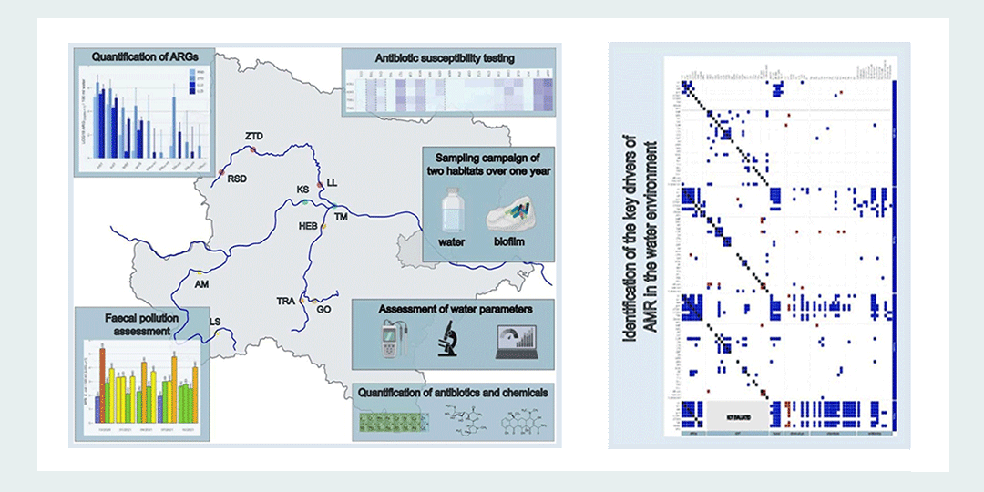Rivers play an important role in the spread of antibiotic resistance. The combined analysis of samples from four Lower Austrian rivers at different times of the year with more than 5000 tested bacterial isolates, more than 100,000 antibiotic resistance tests and more than 3000 resistance gene analyses made it possible to compare resistance developments with unprecedented statistical certainty and establish a first baseline for ABR pollution of Lower Austrian rivers.
The results show that human faecal pollution is a major factor in the spread of resistance genes in river water, but that the type and extent of this varies greatly between rivers and that other factors such as heavy metals, antibiotics and river dynamics also correlate with antibiotic resistance to varying degrees. Whether a causal relationship exists here must first be determined in further studies.
The role of biofilms (slimy microbial communities on the surfaces of stones), which have been described as hotspots of ABR in some small-scale studies, was also investigated. In our study, however, these showed very inconsistent patterns of ABR distribution, depending on the specific local situation.
In general, however, a rather dampened correlation with the pollution parameters was found in comparison to water. In an international comparison, ABR contamination in Lower Austrian rivers was low to moderate, which can be attributed to good wastewater disposal and relatively effective antibiotic management. Nevertheless, more attention should be paid to the problem.
Original Paper
Leopold, M., Kolm, C., Linke, R. B., Schachner-Groehs, I., Koller, M., Kandler, W., Kittinger, C, Zarfel, G., Farnleitner, A. H. & Kirschner, A. K.T., Using a harmonised study design and quantitative tool-box reveals major inconsistencies when investigating the main drivers of water and biofilm antibiotic resistomes in different rivers. Journal of Hazardous Materials 488 (2025) 137343. DOI: 10.1016/j.jhazmat.2025.137343


